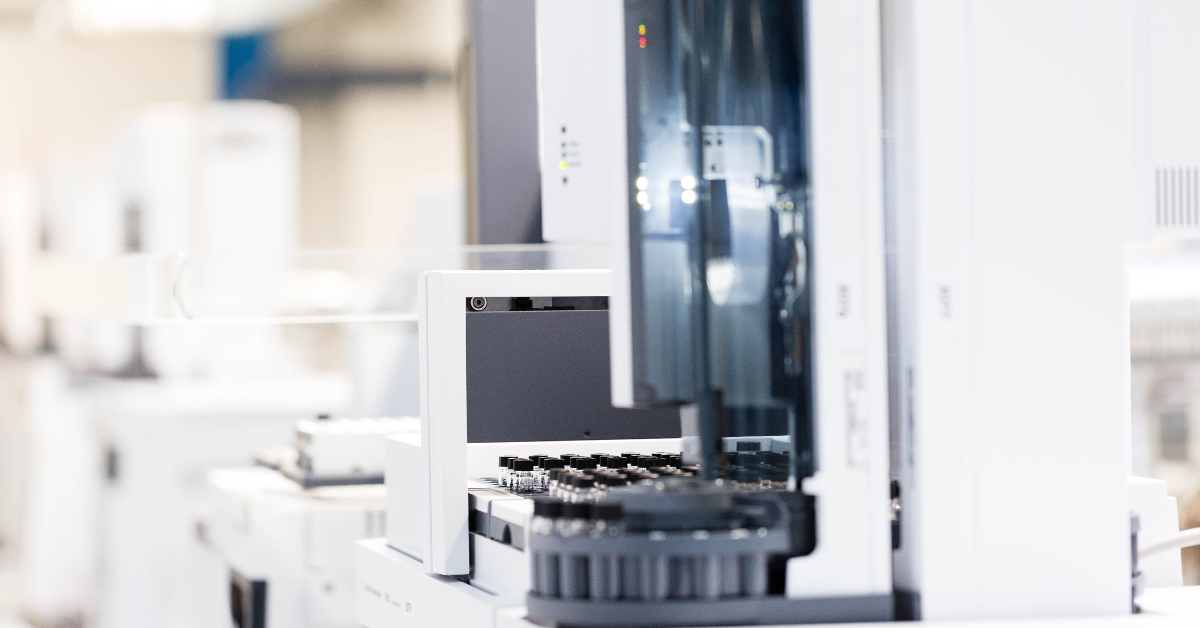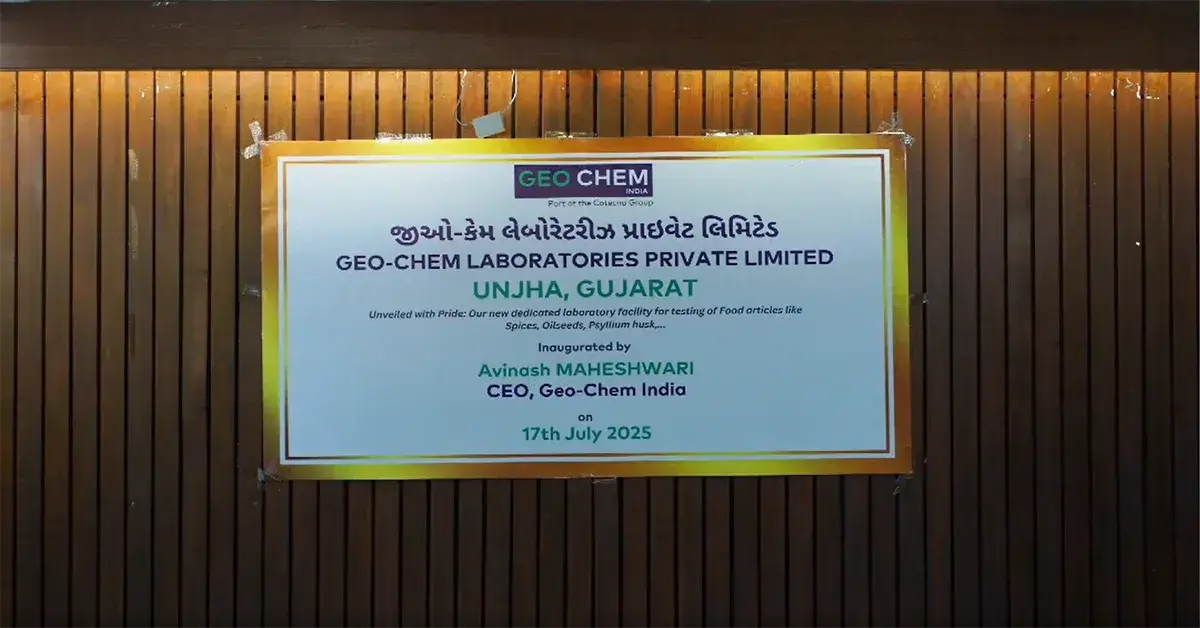Neotron: Per- and Polyfluoroalkyl Substances (PFAS) and Dioxins Analysis

Perfluoroalkyl substances (PFAS) and Dioxins are harmful substances that can contaminate food and feed products. The harmful nature of these substances has led to their restriction and banned use in many countries and regions. Neotron laboratory, part of the Cotecna Group, is an expert in PFAS and Dioxin analysis.
Persistent organic Pollutants (POPS)
PFAS and dioxins are both contaminants that can be classified as persistent organic pollutants. Persistent organic Pollutants (POPS) are chemicals that last for a long time in any substance they contaminate as they are very resistant to decomposition (some remain in the soil for up to twenty years).
Due to their characteristics of persistence and toxicity, POS are very harmful to human health (some are classified as poisons, others as carcinogens) and the environment. POPS accumulate in living organisms, they are present in the atmosphere, air, and water, and their transmission is also due to their migratory nature. The danger from POPS lies in their growing concentration in terrestrial and aquatic ecosystems.
Legislative and Regulations for PFAS and Dioxins
The following regulations and legislations have been passed to regulate the use and limits for contaminants in food and feed:
- Regulation (EC) No 1881/2006 of 19 December 2006 set maximum levels for certain contaminants in foodstuffs.
- Regulation (EC) No 396/2005 of the European Parliament and of the Council of 23 February 2005 on maximum residue levels of pesticides in or on food and feed of plant and animal origin and amending Council Directive 91/414/EEC Text with EEA relevance.
- DIRECTIVE 2002/32/EC of the European parliament and of the council of 7 May 2002 on undesirable substances in animal feed.
- REGULATION (EC) No 767/2009 of the European parliament and of the council of 13 July 2009 on the placing on the market and use of feed, amending European Parliament and Council Regulation (EC) No 1831/2003 and repealing Council Directive 79/373/EEC, Commission Directive 80/511/EEC, Council Directives 82/471/EEC, 83/228/EEC, 93/74/EEC, 93/113/EC and 96/25/EC and Commission Decision 2004/217/EC.
- Commission Recommendation of 17 August 2006 on the presence of deoxynivalenol, zearalenone, ochratoxin A, T-2 and HT-2 and fumonisins in products intended for animal feeding.
Per and polyfluorinated alkyl substances (PFAS)
Per and polyfluorinated alkyl substances (PFAS) belong to a broad group of chemicals characterized by a fully fluorinated hydrophobic carbon chain bonded to diverse hydrophilic heads.
The unique properties of these chemicals, such as chemical and thermal stability and their ability to lower surface tension, make them popular and very useful in various applications for example, food packaging materials, fire-fighting foams, fat and water repellents for paper, leather and textile treatment, performance chemicals and in the production of fluorinated polymers, among other applications.
PFAS in Food
Due to their toxicity, persistence, and bioaccumulation potential, PFAS are considered global environmental pollutants. Besides the environment, the food chain represents another source of exposure, and the risk to consumers related to the presence of PFAS in foods has recently become of increased interest.
On 9 July 2020, the EFSA adopted an opinion on the risk to human health related to the presence of perfluoroalkyl substances in food and concluded that PFOS, PFOA, PFNA and PFHxS can cause developmental effects and may have adverse effects on serum cholesterol, the liver and the immune system and birth weight.
In December 2022 the European Commission published the Commission Regulation (EU) 2022/2388 of 8 December 2022 amending Regulation (EC) No 1881/2006 (repealed by Reg. EU 915/2023) as regards maximum levels of perfluoroalkyl substances in the following foodstuffs:
- Eggs
- Fish meat
- Fish meat for the production of food for infants and young children
- Crustaceans and bivalve molluscs
- Meat and edible offal
For details, please see the Annex to Regulation EU 915/2023, Section 4.2: Perfluoroalkyl substances, through this link.
Foodstuffs listed in the Annex, lawfully placed on the market before 1 January 2023, may remain on the market until their date of minimum durability or use-by date.
PFAS Analysis and Limits
Neotron is accredited to perform the analysis of perfluoroalkyl substances by LC-MS/MS technique.
| Table 1* Analytes |
|
Table 1: PERFLUOROALKYL SUBSTANCES (PFAS) group, according with Com. Reg. (EU) 2022/23881.
Note: The analytes in Table 1* are processed in compliance with Commission Regulation (EC) 2022/2388 for those matrices included in the regulation and their limits: eggs, fish meat, fish meat for the production of food for infants and young children, crustaceans and bivalve molluscs, meat and edible offal.
Limits:
- 0,10 μg/kg except for PFBA 1,0 μg/kg
Other not accredited Matrices:
- Solid: 0,050 μg/kg except for PFBA 0,50 μg/kg
Liquid: 0,010 μg/kg except for PFBA 0,10 μg/kg
Regarding to the monitoring of PFAS in food, Neotron has implemented the quantification limits of the 4 mandatory PFAS (PFOA, PFOS, PFNA, PFHxS) lowering them from 0.050 to 0.010 ug /kg on the following matrices: powdered milk and cereal-based baby food preparations.
Neotron is also able to detect the following substances listed in Commission Recommendation (EU) 2022/1431 in all matrices:
| Table 2* | |
|
Perfluorododecane sulfonic acid (PFDoDS) Perfluorononane sulfonic acid (PFNS) Perfluoropentane sulfonic acid (PFPS) Perfluorotridecane sulfonic acid (PFTrDS) Perfluoroundecane sulfonic acid (PFUnDS) Perfluorooctane sulphonamide (FOSA) Perfluorodecanoic acid (PFDA) Perfluorododecanoic acid (PFDoDA) Perfluoroheptanoic acid (PFHpA) Perfluorohexanoic acid (PFHxA) |
Perfluorotetradecanoic acid (PFTeDA) Perfluorotridecanoic acid (PFTrDA) Perfluoroundecanoic acid (PFUnDA) Perfluorobutane sulfonic acid (PFBS) Perfluorodecane acid (PFDS) Perfluoroheptane acid (PFHpS) Perfluorooctane sulfonic acid (PFOS) Perfluorooctanoic acid (PFOA) Perfluorononanoic acid (PFNA) Perfluorohexane sulfonic acid (PFHxS) Sum of PFOS, PFOA, PFNA and PFHxS |
Table 2: PERFLUOROALKYL SUBSTANCES (PFAS) group
Dioxins in Food
Neotron offers cutting-edge analytical methods for the precise detection of dioxins, PCBs, and a broad spectrum of organic micropollutants in food and feed products.
Dioxins are one of the 12 POPS prioritized by the Stockholm Convention. The Stockholm Convention, held from the 22nd to 23rd of May in 2001, resolved to work towards the elimination and reduction of Persistent organic Pollutants usage. The 12 pollutants below were identified as the top priority.
Pollutants Typologies
The twelve priority POPs are:
- Dioxins
- Furan
- PCBs (Polychlorobiphenyls)
- Aldrin
- Chlordane
- Dichlorodiphenyltrichloroethane (DDT)
- Dieldrin
- Endrin
- Heptachlor
- Mirex
- Toxaphen
- Hexachlorobenzene
In May 2009, the following nine commercial products were added to Stockholm Convention:
- Perfluoroctane sulfonate (PFOS)
- Pentabromodiphenyl ether (PBDE)
- Octabromodiphenyl ether (OBDE)
- Chlordecone
- Hexabromobiphenyl
- Lindane
- Alpha-hexachlorocyclohexane
- Beta-hexachlorocyclohexane
- Pentachlorobenzene
Neotron Analysis of PFAS and Dioxins
Neotron laboratory uses advanced equipment to follow and develop highly sensitive and selective analytical techniques for the determination of organic micropollutants at the ultra-trace-level. These techniques include:
- High Resolution Mass Spectrometer (HRGC/HRMS)
- Triple-Quadrupole Mass Spectrometer for GC-MS/MS applications
- Power-Prep clean-up system
- Rapid extractor for solids with low solvent use (ASE200, ASE300).
- Freeze dryer.
Neotron is also able to test for and analyse other substances listed in Commission Recommendation (EU) 2022/1431.
For more information or to request a free quote, please contact us.
Latest News

24.07.2025
Geo-Chem Launches New Food Testing Lab in Unjha, Gujarat, India
Geo-Chem India expanded its scope of work in Gujarat with the launch of a new food testing laboratory.

08.04.2025
Innovation and Precision: How Complex Diagnostics Are Transforming Plant Health in the Field
Harnessing Technology for Smarter, More Sustainable Crop Protection.

